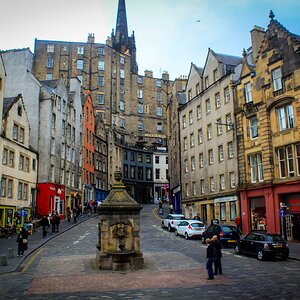- Joined
- Jun 9, 2013
- Messages
- 20,580
- Reaction score
- 12,709
- Website
- moderndinosaur.wordpress.com
- Can others edit my Photos
- Photos NOT OK to edit
Hello, darkroom gurus!
So I've finally made the leap and started developing my own black and white film. Don't ask me why it's taken me 20 years. I'm sure being a vagabond for a good 14 of those 20 years didn't help :er: Of course, I already have questions! But before I get to those questions, I just have to say one thing about my first self-developed roll: SO.FRIGGIN'.COOL!!!
Here's the short version of my question: What effect - if any - does fixer have on contrast in black and white film?
Here's the long version with background details and pictures:
Yesterday, my boyfriend and I successfully developed our first rolls of film (Kentmere 100.)
We used a fresh batch of Caffenol for the developing. Now, I know that there are not a lot of Caffenol fans around here, but I have my reasons for using it and I've done a ton of research. I used a recipe and procedure that was used many times (not by me!) on Kentmere 100 with good results. The answer to the question I'm about to ask is probably going to relate to the developer not the fixer, but there IS a little detail about the fixer that is nagging me, so I wanted to ask that here.
The film I developed yesterday came out well overall, but there was a lot more contrast than I am generally used to. Same with the roll my bf developed. I'm sure the developer has a lot to do with that, but the directions called for a 1+3 dilution of Ilford Rapid Fixer (which we used). Isn't that stronger than necessary? In all the reading I've done, I've always seen it diluted more than that. For my paper negatives I've done in the pinhole, it was a 1+4 dilution, and for film, the directions on the bottle and most websites I've consulted call for a 1+9 dilution. Could this have had any effect on contrast? And even if it doesn't affect contrast, is there a different issue that could happen from using fixer that is not diluted enough?
Here are some pictures to show what I mean. They're all from my K1000, same lens (Asahi 50mm) and same film (Kentmere 100). I tried to find the shots that were higher contrast anyway so you could see the difference.
Here are two pictures from a roll developed by our lab guys with traditional developer:

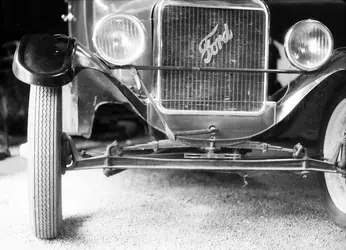
Here are some from the roll I developed in Caffenol:
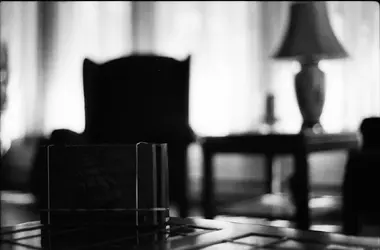
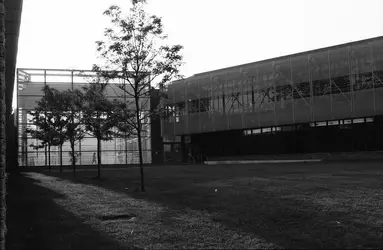
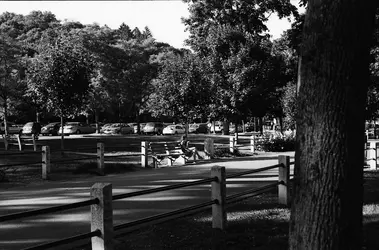
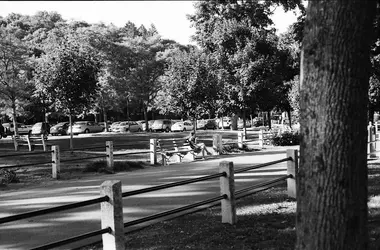
I was bracketing for the last two shots and I attached them both in case they would generate any more information or opinions.
Edited: I mean, they're not terrible or anything; just different. The shots that are obviously overexposed seem much more blown out than they usually are, but I can still do quite a bit with them in post to bring up some more shadows and midtones. But I'm trying to sort out what parts of the developing process might need to be tweaked. If it's the developer, maybe I need to try a different recipe. If the fixer is too strong, maybe that will be the first variable I change. Just trying to get a handle on this crazy chemistry thang
Any comments would be greatly appreciated Thank you!
Thank you!
(Except please don't try to convince me to ditch Caffenol and use a 'real' developer. I know it's not for everyone and I might eventually conclude that it's not for me either, but I have my reasons for using it and they're not random reasons, either, so I'm planning to stick with it for a while.)
One more edit: Here's the website I used with the recipe and instructions: http://www.starsignproductions.com/Caffenol.htm
Sheesh! One LAST edit! That first picture in the Caffenol batch is actually a shot of my pinhole camera taking the picture of the armchairs that I posted in this thread: http://www.thephotoforum.com/forum/.../338199-my-first-homemade-pinhole-camera.html
So I've finally made the leap and started developing my own black and white film. Don't ask me why it's taken me 20 years. I'm sure being a vagabond for a good 14 of those 20 years didn't help :er: Of course, I already have questions! But before I get to those questions, I just have to say one thing about my first self-developed roll: SO.FRIGGIN'.COOL!!!
Here's the short version of my question: What effect - if any - does fixer have on contrast in black and white film?
Here's the long version with background details and pictures:
Yesterday, my boyfriend and I successfully developed our first rolls of film (Kentmere 100.)
We used a fresh batch of Caffenol for the developing. Now, I know that there are not a lot of Caffenol fans around here, but I have my reasons for using it and I've done a ton of research. I used a recipe and procedure that was used many times (not by me!) on Kentmere 100 with good results. The answer to the question I'm about to ask is probably going to relate to the developer not the fixer, but there IS a little detail about the fixer that is nagging me, so I wanted to ask that here.
The film I developed yesterday came out well overall, but there was a lot more contrast than I am generally used to. Same with the roll my bf developed. I'm sure the developer has a lot to do with that, but the directions called for a 1+3 dilution of Ilford Rapid Fixer (which we used). Isn't that stronger than necessary? In all the reading I've done, I've always seen it diluted more than that. For my paper negatives I've done in the pinhole, it was a 1+4 dilution, and for film, the directions on the bottle and most websites I've consulted call for a 1+9 dilution. Could this have had any effect on contrast? And even if it doesn't affect contrast, is there a different issue that could happen from using fixer that is not diluted enough?
Here are some pictures to show what I mean. They're all from my K1000, same lens (Asahi 50mm) and same film (Kentmere 100). I tried to find the shots that were higher contrast anyway so you could see the difference.
Here are two pictures from a roll developed by our lab guys with traditional developer:


Here are some from the roll I developed in Caffenol:




I was bracketing for the last two shots and I attached them both in case they would generate any more information or opinions.
Edited: I mean, they're not terrible or anything; just different. The shots that are obviously overexposed seem much more blown out than they usually are, but I can still do quite a bit with them in post to bring up some more shadows and midtones. But I'm trying to sort out what parts of the developing process might need to be tweaked. If it's the developer, maybe I need to try a different recipe. If the fixer is too strong, maybe that will be the first variable I change. Just trying to get a handle on this crazy chemistry thang
Any comments would be greatly appreciated
(Except please don't try to convince me to ditch Caffenol and use a 'real' developer. I know it's not for everyone and I might eventually conclude that it's not for me either, but I have my reasons for using it and they're not random reasons, either, so I'm planning to stick with it for a while.)
One more edit: Here's the website I used with the recipe and instructions: http://www.starsignproductions.com/Caffenol.htm
Sheesh! One LAST edit! That first picture in the Caffenol batch is actually a shot of my pinhole camera taking the picture of the armchairs that I posted in this thread: http://www.thephotoforum.com/forum/.../338199-my-first-homemade-pinhole-camera.html
Last edited:


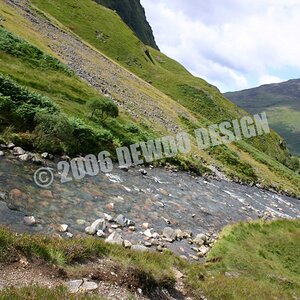
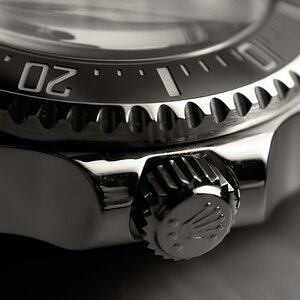
![[No title]](/data/xfmg/thumbnail/1/1592-cfae4a7ea791f96c6e2d03484be2e454.jpg?1619729144)
![[No title]](/data/xfmg/thumbnail/40/40308-f92e28f094216c151f3ad1fd7453c99b.jpg?1619739413)

![[No title]](/data/xfmg/thumbnail/40/40307-b3813381d3c1ef8282c72905405b50fe.jpg?1619739413)



![[No title]](/data/xfmg/thumbnail/40/40356-883c642c8d24d2709b359f9c8b196fcf.jpg?1619739437)
